Feiyu Chen
SPG: Sandwiched Policy Gradient for Masked Diffusion Language Models
Oct 10, 2025Abstract:Diffusion large language models (dLLMs) are emerging as an efficient alternative to autoregressive models due to their ability to decode multiple tokens in parallel. However, aligning dLLMs with human preferences or task-specific rewards via reinforcement learning (RL) is challenging because their intractable log-likelihood precludes the direct application of standard policy gradient methods. While prior work uses surrogates like the evidence lower bound (ELBO), these one-sided approximations can introduce significant policy gradient bias. To address this, we propose the Sandwiched Policy Gradient (SPG) that leverages both an upper and a lower bound of the true log-likelihood. Experiments show that SPG significantly outperforms baselines based on ELBO or one-step estimation. Specifically, SPG improves the accuracy over state-of-the-art RL methods for dLLMs by 3.6% in GSM8K, 2.6% in MATH500, 18.4% in Countdown and 27.0% in Sudoku.
FCVSR: A Frequency-aware Method for Compressed Video Super-Resolution
Feb 10, 2025



Abstract:Compressed video super-resolution (SR) aims to generate high-resolution (HR) videos from the corresponding low-resolution (LR) compressed videos. Recently, some compressed video SR methods attempt to exploit the spatio-temporal information in the frequency domain, showing great promise in super-resolution performance. However, these methods do not differentiate various frequency subbands spatially or capture the temporal frequency dynamics, potentially leading to suboptimal results. In this paper, we propose a deep frequency-based compressed video SR model (FCVSR) consisting of a motion-guided adaptive alignment (MGAA) network and a multi-frequency feature refinement (MFFR) module. Additionally, a frequency-aware contrastive loss is proposed for training FCVSR, in order to reconstruct finer spatial details. The proposed model has been evaluated on three public compressed video super-resolution datasets, with results demonstrating its effectiveness when compared to existing works in terms of super-resolution performance (up to a 0.14dB gain in PSNR over the second-best model) and complexity.
OAPT: Offset-Aware Partition Transformer for Double JPEG Artifacts Removal
Aug 21, 2024



Abstract:Deep learning-based methods have shown remarkable performance in single JPEG artifacts removal task. However, existing methods tend to degrade on double JPEG images, which are prevalent in real-world scenarios. To address this issue, we propose Offset-Aware Partition Transformer for double JPEG artifacts removal, termed as OAPT. We conduct an analysis of double JPEG compression that results in up to four patterns within each 8x8 block and design our model to cluster the similar patterns to remedy the difficulty of restoration. Our OAPT consists of two components: compression offset predictor and image reconstructor. Specifically, the predictor estimates pixel offsets between the first and second compression, which are then utilized to divide different patterns. The reconstructor is mainly based on several Hybrid Partition Attention Blocks (HPAB), combining vanilla window-based self-attention and sparse attention for clustered pattern features. Extensive experiments demonstrate that OAPT outperforms the state-of-the-art method by more than 0.16dB in double JPEG image restoration task. Moreover, without increasing any computation cost, the pattern clustering module in HPAB can serve as a plugin to enhance other transformer-based image restoration methods. The code will be available at https://github.com/QMoQ/OAPT.git .
Decoupling Meta-Reinforcement Learning with Gaussian Task Contexts and Skills
Dec 11, 2023Abstract:Offline meta-reinforcement learning (meta-RL) methods, which adapt to unseen target tasks with prior experience, are essential in robot control tasks. Current methods typically utilize task contexts and skills as prior experience, where task contexts are related to the information within each task and skills represent a set of temporally extended actions for solving subtasks. However, these methods still suffer from limited performance when adapting to unseen target tasks, mainly because the learned prior experience lacks generalization, i.e., they are unable to extract effective prior experience from meta-training tasks by exploration and learning of continuous latent spaces. We propose a framework called decoupled meta-reinforcement learning (DCMRL), which (1) contrastively restricts the learning of task contexts through pulling in similar task contexts within the same task and pushing away different task contexts of different tasks, and (2) utilizes a Gaussian quantization variational autoencoder (GQ-VAE) for clustering the Gaussian distributions of the task contexts and skills respectively, and decoupling the exploration and learning processes of their spaces. These cluster centers which serve as representative and discrete distributions of task context and skill are stored in task context codebook and skill codebook, respectively. DCMRL can acquire generalizable prior experience and achieve effective adaptation to unseen target tasks during the meta-testing phase. Experiments in the navigation and robot manipulation continuous control tasks show that DCMRL is more effective than previous meta-RL methods with more generalizable prior experience.
SegT: A Novel Separated Edge-guidance Transformer Network for Polyp Segmentation
Jun 19, 2023



Abstract:Accurate segmentation of colonoscopic polyps is considered a fundamental step in medical image analysis and surgical interventions. Many recent studies have made improvements based on the encoder-decoder framework, which can effectively segment diverse polyps. Such improvements mainly aim to enhance local features by using global features and applying attention methods. However, relying only on the global information of the final encoder block can result in losing local regional features in the intermediate layer. In addition, determining the edges between benign regions and polyps could be a challenging task. To address the aforementioned issues, we propose a novel separated edge-guidance transformer (SegT) network that aims to build an effective polyp segmentation model. A transformer encoder that learns a more robust representation than existing CNN-based approaches was specifically applied. To determine the precise segmentation of polyps, we utilize a separated edge-guidance module consisting of separator and edge-guidance blocks. The separator block is a two-stream operator to highlight edges between the background and foreground, whereas the edge-guidance block lies behind both streams to strengthen the understanding of the edge. Lastly, an innovative cascade fusion module was used and fused the refined multi-level features. To evaluate the effectiveness of SegT, we conducted experiments with five challenging public datasets, and the proposed model achieved state-of-the-art performance.
Pedestrian Crossing Action Recognition and Trajectory Prediction with 3D Human Keypoints
Jun 01, 2023



Abstract:Accurate understanding and prediction of human behaviors are critical prerequisites for autonomous vehicles, especially in highly dynamic and interactive scenarios such as intersections in dense urban areas. In this work, we aim at identifying crossing pedestrians and predicting their future trajectories. To achieve these goals, we not only need the context information of road geometry and other traffic participants but also need fine-grained information of the human pose, motion and activity, which can be inferred from human keypoints. In this paper, we propose a novel multi-task learning framework for pedestrian crossing action recognition and trajectory prediction, which utilizes 3D human keypoints extracted from raw sensor data to capture rich information on human pose and activity. Moreover, we propose to apply two auxiliary tasks and contrastive learning to enable auxiliary supervisions to improve the learned keypoints representation, which further enhances the performance of major tasks. We validate our approach on a large-scale in-house dataset, as well as a public benchmark dataset, and show that our approach achieves state-of-the-art performance on a wide range of evaluation metrics. The effectiveness of each model component is validated in a detailed ablation study.
Big-Data Clustering: K-Means or K-Indicators?
Jun 03, 2019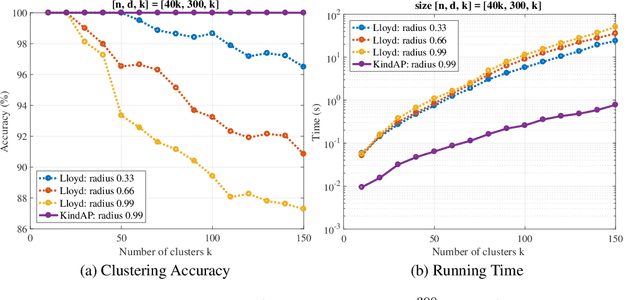
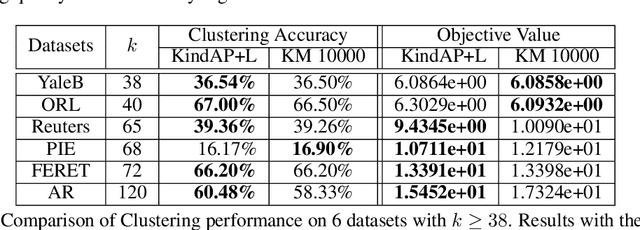
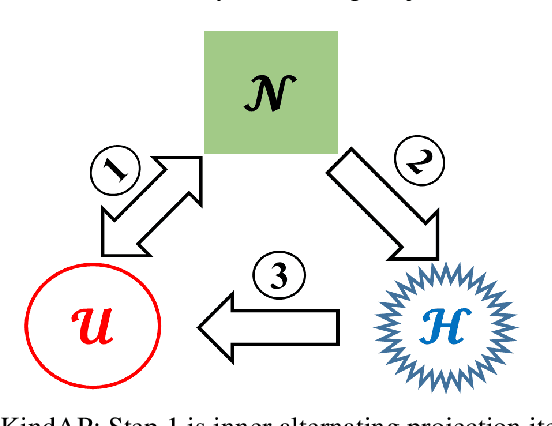

Abstract:The K-means algorithm is arguably the most popular data clustering method, commonly applied to processed datasets in some "feature spaces", as is in spectral clustering. Highly sensitive to initializations, however, K-means encounters a scalability bottleneck with respect to the number of clusters K as this number grows in big data applications. In this work, we promote a closely related model called K-indicators model and construct an efficient, semi-convex-relaxation algorithm that requires no randomized initializations. We present extensive empirical results to show advantages of the new algorithm when K is large. In particular, using the new algorithm to start the K-means algorithm, without any replication, can significantly outperform the standard K-means with a large number of currently state-of-the-art random replications.
Compressed Sensing: From Research to Clinical Practice with Data-Driven Learning
Mar 19, 2019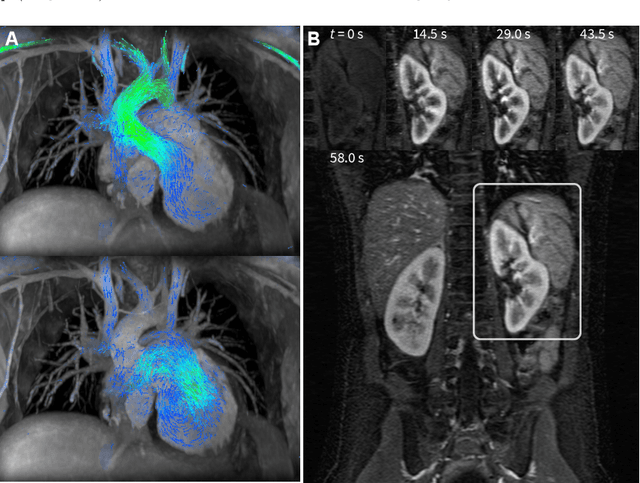
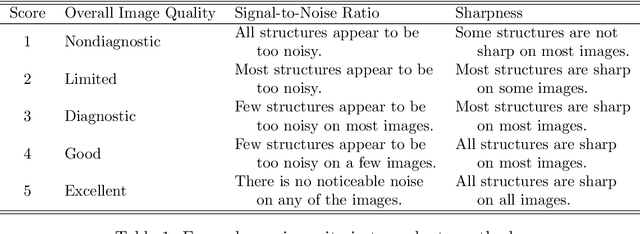
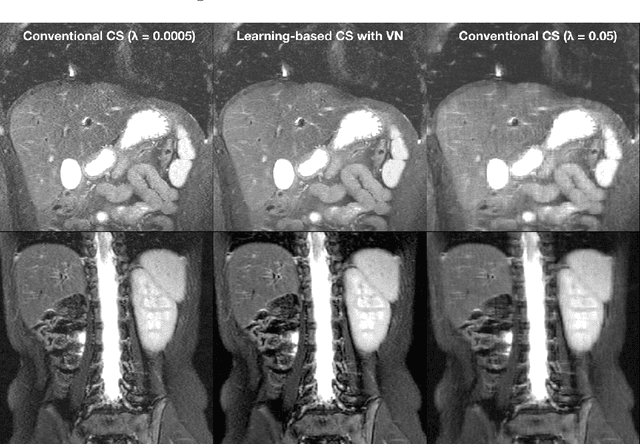
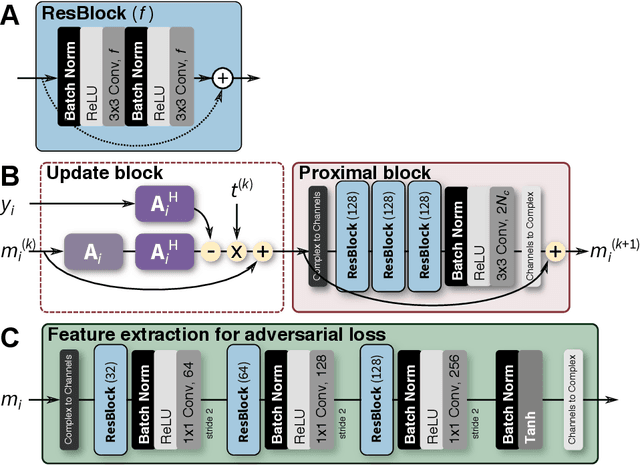
Abstract:Compressed sensing in MRI enables high subsampling factors while maintaining diagnostic image quality. This technique enables shortened scan durations and/or improved image resolution. Further, compressed sensing can increase the diagnostic information and value from each scan performed. Overall, compressed sensing has significant clinical impact in improving the diagnostic quality and patient experience for imaging exams. However, a number of challenges exist when moving compressed sensing from research to the clinic. These challenges include hand-crafted image priors, sensitive tuning parameters, and long reconstruction times. Data-driven learning provides a solution to address these challenges. As a result, compressed sensing can have greater clinical impact. In this tutorial, we will review the compressed sensing formulation and outline steps needed to transform this formulation to a deep learning framework. Supplementary open source code in python will be used to demonstrate this approach with open databases. Further, we will discuss considerations in applying data-driven compressed sensing in the clinical setting.
Highly Scalable Image Reconstruction using Deep Neural Networks with Bandpass Filtering
May 08, 2018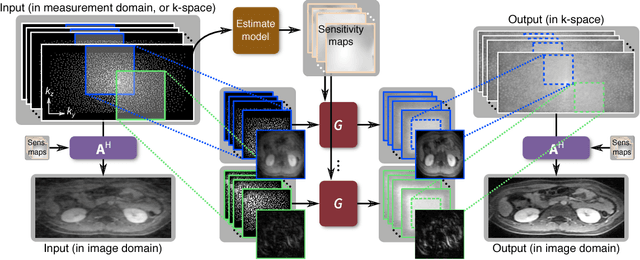
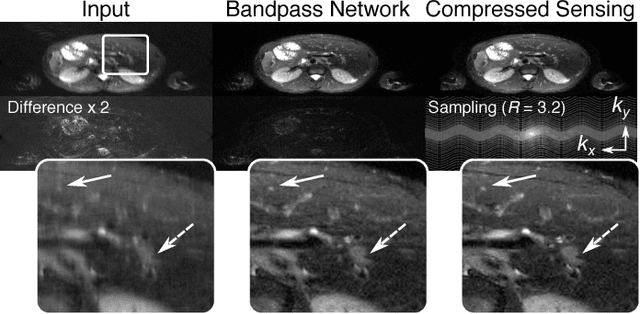
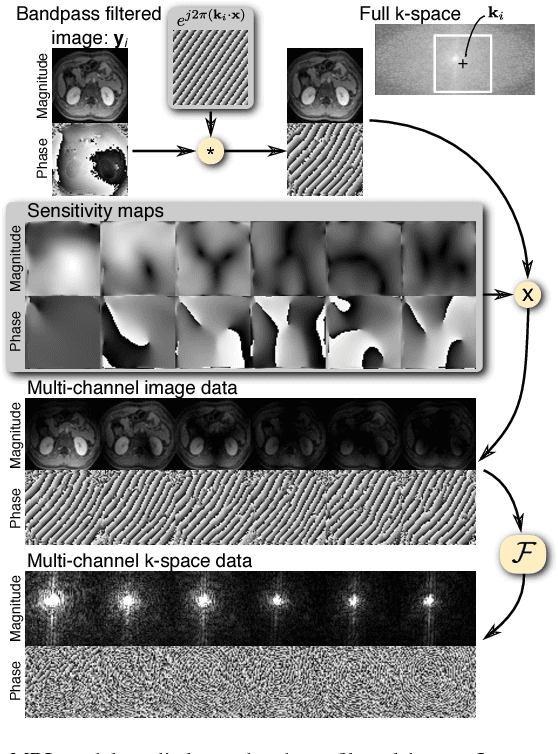

Abstract:To increase the flexibility and scalability of deep neural networks for image reconstruction, a framework is proposed based on bandpass filtering. For many applications, sensing measurements are performed indirectly. For example, in magnetic resonance imaging, data are sampled in the frequency domain. The introduction of bandpass filtering enables leveraging known imaging physics while ensuring that the final reconstruction is consistent with actual measurements to maintain reconstruction accuracy. We demonstrate this flexible architecture for reconstructing subsampled datasets of MRI scans. The resulting high subsampling rates increase the speed of MRI acquisitions and enable the visualization rapid hemodynamics.
 Add to Chrome
Add to Chrome Add to Firefox
Add to Firefox Add to Edge
Add to Edge